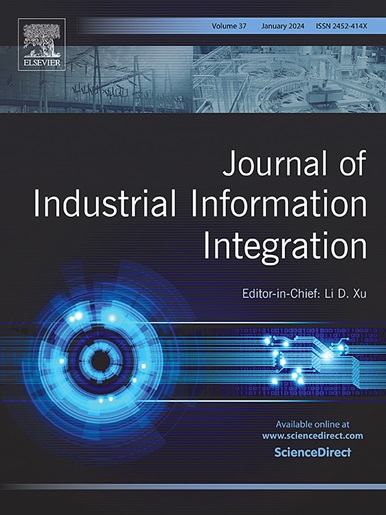基于混合神经网络的灾前鲁棒供应链设计:以血液供应链为例
IF 10.4
1区 计算机科学
Q1 COMPUTER SCIENCE, INTERDISCIPLINARY APPLICATIONS
引用次数: 0
摘要
有效的救灾需要高效的供应链管理,特别是在不确定条件下的易腐和非易腐货物。本研究旨在通过提出一种混合优化模型来解决灾害供应链的挑战,该模型可以最大限度地缩短响应时间和运营成本,同时确保向受灾地区快速可靠地运送必要的救援物资。该模型将预测分析和稳健的优化技术结合在两个阶段的方法中:灾前规划和灾后响应。使用混合卷积神经网络(CNN)和循环神经网络(RNN)模型预测必需品的需求,并通过蚁群优化(ACO)进行优化以提高准确性。优化后的CNN-RNN模型的均方误差(MSE)为0.028,均方根误差(RMSE)为0.167,决定系数(R²)为0.93,与未优化的基线模型相比,MSE提高了20%,RMSE降低了11%。优化阶段采用Aghezzaf的强大优化框架来处理供应链中供需的不确定性和潜在的中断。所提出的数学模型将货物分为易腐物品和非易腐物品,结合了现实世界的约束条件,如库存过期和运输延误,并评估了各种灾难场景下的性能。与基线模型相比,该模型显示出优越的预测性能,在准确性和稳健性方面取得了显着进步。使用统计测试和真实场景进行验证,确认了模型的可靠性。通过从经过验证的数据库中获取数据,并采用交叉引用技术进行一致性检查,确保了数据的真实性。敏感性分析进一步强调了该模型对不同灾害条件的适应性,展示了在最小化响应时间和成本方面的弹性和操作效率。以血液供应链为例,该模型为资源分配和决策提供了灵活可靠的框架,显著提高了灾害管理水平。通过将先进的机器学习技术与鲁棒优化相结合,该模型弥合了理论方法与实际救灾应用之间的差距。这一创新为决策者提供了危机前规划、动态响应策略和高效供应链运营的战略工具,有助于改善灾害情况下的结果。本文章由计算机程序翻译,如有差异,请以英文原文为准。
Hybrid neural network-based metaheuristics in designing robust supply chains under pre-disaster: A case study of blood supply chain
Effective disaster relief requires efficient supply chain management, particularly for perishable and non-perishable goods under uncertain conditions. This study aims to address the challenges of disaster supply chains by proposing a hybrid optimization model that minimizes response times and operational costs, while ensuring the rapid and reliable delivery of essential relief items to affected areas. The model combines predictive analytics and robust optimization techniques in a two-phase approach: pre-disaster planning and post-disaster response. Demand for essential goods is predicted using a hybrid Convolutional Neural Network (CNN) and Recurrent Neural Network (RNN) model, optimized with Ant Colony Optimization (ACO) to improve accuracy. The ACO-optimized CNN-RNN model achieved a Mean Squared Error (MSE) of 0.028, Root Mean Square Error (RMSE) of 0.167, and a Coefficient of Determination (R²) of 0.93, demonstrating a 20% improvement in MSE and an 11% reduction in RMSE compared to the unoptimized baseline model. The optimization phase employs Aghezzaf’s robust optimization framework to handle uncertainties in supply, demand, and potential disruptions across the supply chain. The proposed mathematical model categorizes goods into perishable and non-perishable items, incorporates real-world constraints such as inventory expiration and transportation delays, and evaluates performance under various disaster scenarios. The model demonstrates superior predictive performance, achieving significant improvements in accuracy and robustness compared to baseline models. Validation was conducted using statistical tests and real-world scenarios, confirming the reliability of the model. Data authenticity was ensured by sourcing from validated databases and employing cross-referencing techniques for consistency checks. Sensitivity analysis further highlighted the model’s adaptability to different disaster conditions, demonstrating resilience and operational efficiency in minimizing response times and costs. Using the blood supply chain as a case study, the proposed model significantly enhances disaster management by providing a flexible and reliable framework for resource allocation and decision-making. By integrating advanced machine learning techniques with robust optimization, the model bridges the gap between theoretical approaches and practical disaster relief applications. This innovation offers decision-makers a strategic tool for pre-crisis planning, dynamic response strategies, and efficient supply chain operations, contributing to improved outcomes in disaster scenarios.
求助全文
通过发布文献求助,成功后即可免费获取论文全文。
去求助
来源期刊

Journal of Industrial Information Integration
Decision Sciences-Information Systems and Management
CiteScore
22.30
自引率
13.40%
发文量
100
期刊介绍:
The Journal of Industrial Information Integration focuses on the industry's transition towards industrial integration and informatization, covering not only hardware and software but also information integration. It serves as a platform for promoting advances in industrial information integration, addressing challenges, issues, and solutions in an interdisciplinary forum for researchers, practitioners, and policy makers.
The Journal of Industrial Information Integration welcomes papers on foundational, technical, and practical aspects of industrial information integration, emphasizing the complex and cross-disciplinary topics that arise in industrial integration. Techniques from mathematical science, computer science, computer engineering, electrical and electronic engineering, manufacturing engineering, and engineering management are crucial in this context.
 求助内容:
求助内容: 应助结果提醒方式:
应助结果提醒方式:


